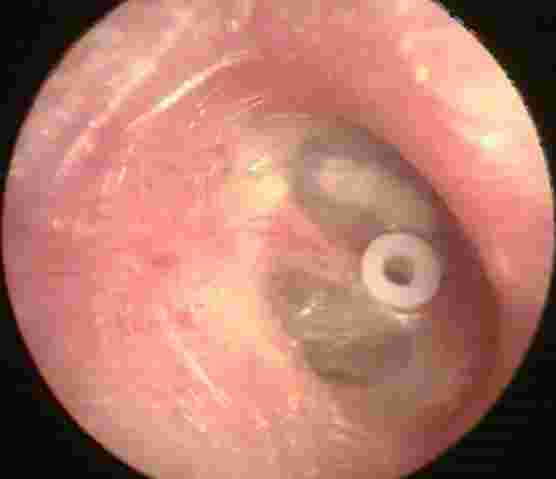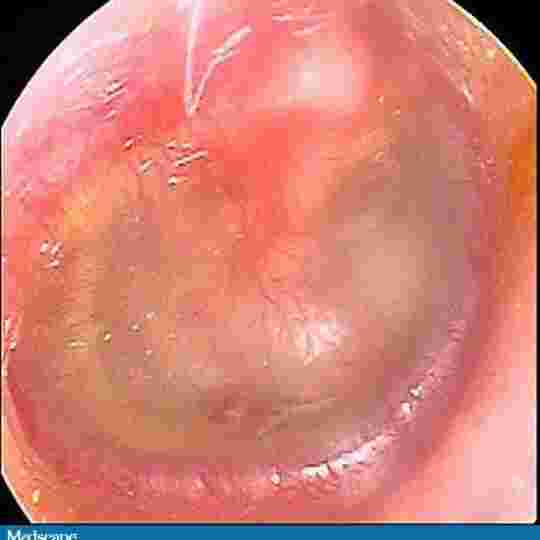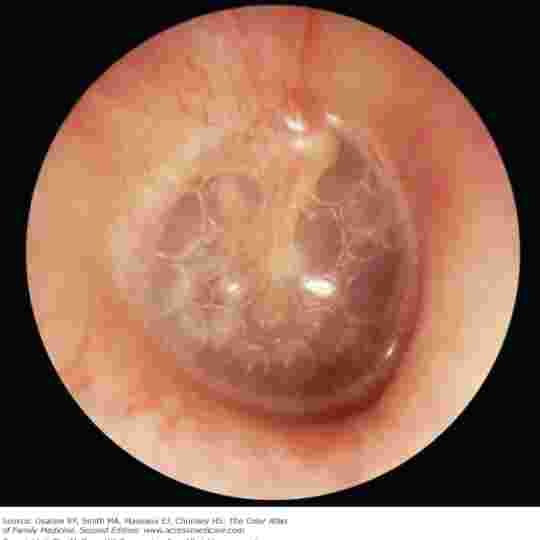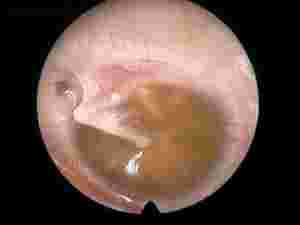Middle Ear Fluid
Otitis media with effusion
Otitis media with effusion (OME) is thick or sticky fluid behind the eardrum in the middle ear.
Causes
- The Eustachian tube connects the inside of the ear to the back of the nose. This tube helps drain fluid to prevent it from building up in the ear. The fluid drains from the tube and is swallowed. When the Eustachian tube is partially blocked, fluid builds up in the middle ear. Bacteria inside the ear become trapped and begin to grow. This may lead to an ear infection.
- The following can cause Eustachian tube dysfunction:
- Allergies
- Adenoid tissue hypertrophy behind nose which blocks behind nose opening of eustachean tube (most commonest in children)
- Irritants (particularly cigarette smoke)
- Respiratory infections
- Sudden increases in air pressure (such as descending in an airplane or on a mountain road)
Getting water in a baby’s ears will not lead to a blocked tube.
OME is most common in winter or early spring, but it can occur at any time of year. It can affect people of any age. It occurs most often in children under age 2, but is rare in newborns.
Younger children get OME more often than older children or adults for several reasons:
- The tube is shorter, more horizontal, and straighter, making it easier for bacteria to enter.
- The tube is floppier, with a tinier opening that’s easy to block.
- Young children get more colds because it takes time for the immune system to be able to recognize and ward off cold viruses.
The fluid in OME is often thin and watery or gluey.
Symptoms
Older children and adults often complain of muffled hearing or a sense of fullness in the ear. Younger children may turn up the television volume because of hearing loss. When fluid or glue starts contracting infection due to longer accumulation patient starts complaining of ear pain.
Exams and Tests
Your doctor will examine the eardrum with an otoscope and look for certain changes, such as:
- Air bubbles on the surface of the eardrum
- Dullness of the eardrum when a light is used
- Eardrum that does not seem to move when little puffs of air are blown at it
- Fluid behind the eardrum
A test called tympanometry is an accurate tool for diagnosing OME. The results of this test can help tell the amount and thickness of the fluid.
An audiometer or other type of formal hearing test may be done. This can help the provider decide on treatment.
Treatment
Initial treatment will be medical. If infection or glue doesn’t subside we do a grommet insertion which is a ventilatory tube to drain middle fluid out and rid patient of symptoms. This tube stays in the ear drum for few months and extrudes by itself once middle ear lining dries up and becomes healthy.

Arrow showing image of grommet ventilatory tube
- Avoid cigarette smoke
- Encourage infants to breastfeed
- Treat allergies by staying away from triggers (such as dust). Adults and older children may be given allergy medicines.
- In kids most of the time its associated with adenoids –which must be taken out for the Eustachian tube to work properly.
If there is a delay in clearance of fluid-there will be hearing loss and ear drum may slowly thins out which leads to formation of an ear perforation. Its always better to clear this problem as early as possible.
Alternative Names
OME; Secretory otitis media; Serous otitis media; Silent otitis media; Silent ear infection; Glue ear

Contact us
Bayya Hospitals
12-25-192, Bhagath Singh Centre, Kothapet, Guntur, Andhra Pradesh 522001
0863-2225729
+91 6304429294
+91 93819 22827
Useful Links
Consultation Hours
For ENT
Monday – Saturday 9AM – 1:30 Noon,
Evening 5:30PM to 8:00PM
Sunday – CLOSED
For EYE
Monday – Saturday 9AM – 5:00PM
Sunday – CLOSED



